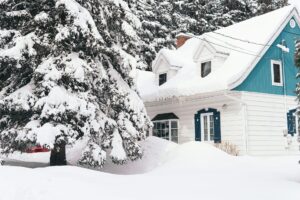Tampa Bay’s hurricane season reaches its most intense point in September, bringing waves of tropical storms and volatile weather patterns. Amid these conditions, your roof’s ability to withstand high winds becomes a critical line of protection for your home. Because strong gusts often topple trees, pull at aging shingles, and pummel structural seams, a reliable roof isn’t just about comfort, it’s about safety.
Many homeowners underestimate how quickly wind-driven rain and debris can exploit weak spots. The best time to evaluate your roof is well before dark clouds roll in, allowing enough lead time to schedule inspections, upgrades, or repairs. By understanding Florida’s stringent building codes, assessing wind rating systems, and recognizing key vulnerability points, you stand a far better chance of weathering the season without unexpected damage.
If you’re not entirely sure where to start, HOMEMASTERS offers comprehensive hurricane readiness inspections that take the guesswork out of roof evaluations. Our experts check for code compliance, material integrity, installation quality, and more, giving you confidence that your home will be storm-ready when it matters most.
Florida Building Codes and Your Roof
Florida’s building codes rank among the toughest in the nation, especially in coastal regions like Tampa Bay that lie in the direct path of tropical storms. These standards require roofing systems to be built or retrofitted to withstand high winds, intense rainfall, and sideways gusts that can overwhelm typical materials. Instead of simple cosmetic fixes, Florida mandates robust reinforcement measures that prioritize structural integrity.
If your home predates the mid-2000s, your roof may have been installed under older code guidelines. Over the years, Florida building code requirements evolved to include more rigorous testing standards and stricter fastening rules. For instance, modern codes often specify the number and placement of nails per shingle or tile, along with mandatory underlayment materials capable of repelling driving rain. While older roofs might still be functional, they could fail to meet newer wind resistance benchmarks, an important consideration as storms become more intense.
This progressive tightening of standards means that any resident in an older Tampa Bay home should pay close attention to roof upgrades. Even changes as seemingly small as improved fasteners or sealed roof deck technology can significantly increase your overall hurricane defense. For official details on revised codes and standards, see the Florida Department of Business & Professional Regulation guidelines, which outline specific wind-zone mandates across the state.
Understanding Wind Ratings and Testing Standards
An essential aspect of hurricane readiness involves grasping your roof’s wind rating. This rating signifies how well roofing materials, such as shingles, tiles, or metal panels, hold up against sustained and gusty winds. Manufacturers define these ratings through rigorous laboratory tests, where arrays of materials are blasted with increasing wind speeds until they fail.
In Florida’s coastal zones, roof coverings should typically meet wind speed tolerances of at least 130 to 150 mph, depending on the exact location and property elevation. However, local building codes can push the requirement even higher in regions especially prone to extreme sustained winds. A roof rated for 130 mph wind speeds may suffice in one area but be below-code in another. Reviewing these numbers helps ensure you aren’t merely guessing at your roof’s storm capabilities.
Beyond the wind rating itself, reliable materials must also pass testing standards like the ASTM (American Society for Testing and Materials) or UL (Underwriters Laboratories) certifications. These standards verify that products have proven resilience to water penetration, tear resistance, and structural uplift. Paying attention to these benchmarks protects you from investing in inferior roofing systems that may falter when weather extremes hit.
Assessing Your Current Roof’s Hurricane Readiness
Many homeowners wonder if they can handle an initial roof check on their own before bringing in professionals. While it’s wise to schedule an expert inspection, you can still spot common signs that indicate potential weaknesses:
– Look for curled, cracked, or missing shingles, as these are more likely to peel away or leak during storms.
– Check your attic for evidence of water intrusion, such as damp insulation or dark water stains.
– Examine gutters, eaves, and soffits for loose or rusted fasteners that may come undone under heavy wind pressure.
– Assess the flashing around chimneys, skylights, and roof vents, corrosion or gaps invite wind-driven rain.
If any of these red flags pop up, you’ll want professional insight right away. A thorough hurricane readiness inspection by HOMEMASTERS includes a top-to-bottom roof analysis. We look for damage on shingles, tiles, or metal panels, check the condition of underlayment, and test the structural anchoring. This detailed approach covers details that often go unnoticed yet make a huge difference in hurricane performance.
Common Weak Points in Tampa Bay Roofs
A handful of areas are especially prone to failure when subjected to hurricane-force conditions. Older homes built before modern Florida building codes may have roof-to-wall connections that aren’t adequately reinforced, allowing wind uplift to separate roof decking from the walls. Outdated or poorly installed hurricane straps can also compromise a roof’s structural continuity, leaving it vulnerable in high gusts.
Another typical issue is weak underlayment. Underlayment is the layer between your roof’s covering (like shingles) and the roof deck. If it’s not sealed tightly or if it’s deteriorated, wind-driven rain can penetrate into your attic. Similarly, plumbing vents, skylights, and other roof penetrations can become water entry points if flashing is cracked, rusted, or improperly sealed.
Finally, many Tampa Bay roofs suffer from insufficient ventilation. Without good air circulation, attic heat and moisture accumulate, weakening wooden frames and hastening the aging process. Combined with intense storms, such weakened structure is more inclined to rip apart under stress. Identifying these vulnerabilities early means you can correct them before the next hurricane draws near.
Practical Storm Resistance Improvements
You don’t need an entirely new roof to enhance your storm defenses. In fact, there are several cost-effective measures that, when done correctly, add significant resilience:
– Reinforce or Replace Flashing: High-quality metal flashing protects the seam between different roof surfaces. Gaps or corrosion in these metal strips create prime entry points for water.
– Seal the Roof Deck: Applying peel-and-stick underlayment or self-adhering membranes prevents rain from infiltrating seams between decking panels.
– Add Hurricane Straps: These specialized metal connectors bridge gaps between the roof structure and your home’s walls, locking them together. Upgrading your existing strapping can substantially reduce roof uplift pressure.
– Improve Drainage: Clogged or inefficient gutters and downspouts can send water cascading along the edge of your roof, exacerbating leaks. Keep these channels clear and well-maintained.
– Secure Loose Shingles: Re-nail or replace any questionable shingles to minimize the chance of wind peeling them away.
While you can sometimes handle minor tasks yourself, remember that roofing work often requires specialized tools and extensive safety precautions. For the best results, consult with professionals like HOMEMASTERS who understand the detailed requirements of Tampa Bay’s unique hurricane environment.
The Role of Proper Installation
Even the sturdiest and highest-rated materials can fail if installed incorrectly. In places like Tampa Bay, where gale-force winds and torrential rains can last for hours, the margin for error narrows considerably. If fasteners are spaced too far apart, shingles are not aligned accurately, or adhesives are skimped on, you’ll risk catastrophic failure regardless of the product rating.
Florida-specific installation guidelines, including the spacing and type of nails or screws for shingles and tiles, must be met to ensure code compliance. Detailed manufacturer instructions also highlight the correct overlap for underlayment and how much adhesive to use for ridge caps. Quality construction means scrutinizing every step, from the roof deck’s moisture barrier to the final ridge vent installation.
When installing or replacing a roof, it’s wise to work with certified contractors and installers who have experience with Florida’s building codes. Teams like HOMEMASTERS consistently train on the latest techniques that go beyond bare-minimum standards, focusing instead on ensuring your roof has the best chance of withstanding a real-world hurricane test.
Insurance Considerations for Hurricane Season
Insurance policies in hurricane-prone areas often come with special provisions. If you haven’t recently verified your coverage, it’s a good idea to do so before a potential storm. Many providers require specific documentation showing that your roof meets Florida codes or can withstand certain wind speeds. Having up-to-date roofing inspections, completed repairs, and code-compliant upgrades can help you secure more favorable rates, or at least streamline the claims process if damage occurs.
Be aware that some policies contain windstorm deductibles, meaning you’re responsible for a higher out-of-pocket portion if wind damage is the cause of the claim. Maintaining a strong, code-compliant roof can limit the severity of damage and reduce financial risk. Keep thorough records of roofing work, including photos, contractor invoices, and any relevant permits. These documents can be instrumental if you need to demonstrate your home’s hurricane preparedness to an insurance adjuster.
Timeline for Hurricane Preparation
Preparing your roof is far more straightforward when done well in advance of peak hurricane season. Aim to schedule an initial roof inspection in late winter or early spring. You’ll have time to budget for any repairs, secure materials, and complete upgrades when contractors have more availability. As summer approaches, recheck essential maintenance items to ensure everything remains in top shape.
Should a hurricane watch be issued, your final steps will likely involve securing any loose objects around your property, trimming overhanging branches, and performing quick scans for visible roof damage. Avoid climbing onto the roof once winds pick up, any remaining vulnerabilities are best handled during calmer weather.
If circumstances prevent an early start, remember that late repairs are better than no repairs at all. Just be prepared for the possibility of longer contractor wait times or supply shortages. The key is recognizing that a proactive timetable ensures maximum peace of mind when storm clouds gather over Tampa Bay.
Conclusion
Hurricane season always serves as a reality check for coastal Florida communities. But it doesn’t have to arrive with anxiety or uncertainty about your roof’s ability to handle the next big storm. By understanding local building codes, reviewing wind ratings, and identifying common weak spots, you not only protect your home, you also protect your peace of mind.
Even small upgrades, like adding new flashing or sealing the roof deck, make a significant difference in weathering intense wind gusts. A confident approach to hurricane preparedness comes from marrying high-grade materials with proper installation and rigorous inspections. If you’re wondering whether your current roof can pass this season’s test, an expert evaluation is the fastest way to find out.
When you’re ready for thorough peace of mind, HOMEMASTERS Roofing Contractors are here to help with professional hurricane preparation services. Our skilled team knows Tampa Bay’s weather demands inside and out, and we’re dedicated to delivering a roof that remains dependable, season after season. Let us guide you through the steps needed to fortify your home against the harshest storms, ensuring your well-being and comfort no matter what nature brings.




